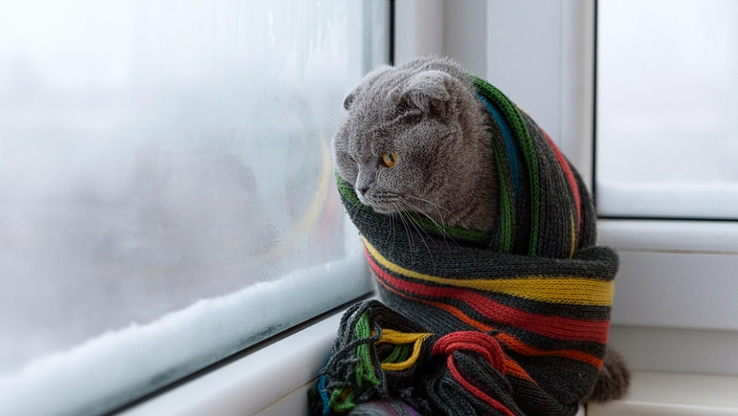Did you know that our furry little friends can also be sensitive to the harsh cold? In the midst of winter, here are some tips to best protect them and ensure their well-being.
Others are reading now
Despite appearances, with their thick fur coats, cats are naturally equipped to handle winter temperatures. During autumn, most cat breeds undergo a molting process: their summer fur is gradually replaced by a denser and thicker coat, better suited for colder weather.
This adaptation prepares them for the harshness of winter. However, this does not completely immunize cats against cold, contrary to popular belief. But at what temperature should we start to worry about their well-being?
What is the Minimum Temperature a Cat Can Withstand?
Like humans, a cat’s body adapts to cold weather, as does its sleep pattern. A cat’s heart rate decreases, leading to a slowdown in blood flow to the extremities. Just as we get cold hands, feet, or noses when we catch a cold, the extremities of your cat are good indicators to check if they are also feeling cold.
Also read
According to French Caminteresse, if you think your cat is affected, touch the tips of its ears or the pads under its paws to see if they are too cold. A cat approaching hypothermia, with a body temperature between 32° and 37.7°(Celcius), will also start shivering and seek out heat sources inside your home.
What is a Cat’s Normal Body Temperature?
The normal internal temperature of a cat ranges between 37.7 and 38.9°. A temperature between 35.5 and 37.7° indicates mild hypothermia. If it drops around 32°, take your cat to the vet immediately, as it is a state of severe hypothermia, which can be life-threatening.
What Temperature Can a Cat Withstand in Winter?
Cats naturally appreciate and seek out heat sources, as these allow them to maintain their body temperature without expending energy, promoting their well-being. Your pet will generally not have much to fear inside your home if you keep a regular eye on them.
If your cat is accustomed to its daily outdoor stroll, don’t worry. However, arrange spaces where it can take refuge in case of gusty winds, especially if it’s sedentary.
More than the cold, it’s the snow that can be problematic: the pads of your pet’s paws are very sensitive to snow, and your cat may start licking and ingesting it, leading to gastric problems or rhinitis. Generally, below 5 °C outdoors, a cat begins to feel the adverse health effects of the cold.
Do Cats Get Cold During Outdoor Nights?
It all depends on the temperature. While cats can easily live outdoors for most of the year, some felines (especially indoor cats) may feel and suffer from the cold on winter nights, generally when the temperature drops below 5 °C.
As explained by santevet.fr, a cat’s tolerance threshold can vary based on several factors, such as breed, age, health, and its habits (is it used to living outdoors?). Moreover, felines with an average body temperature of 38.5 °C usually withstand cold well.
Which Cat Breeds are Most Resistant to Cold?
Some cats handle low temperatures better than others. This includes certain long-haired felines like the Norwegian or Siberian, built for very cold temperatures. Other breeds like the Russian-origin Nebelung with its blue-gray fur, the Persian, and the Birman are also included. Conversely, “naked” cats like the Sphynx, which are hairless, do not tolerate cold well.


